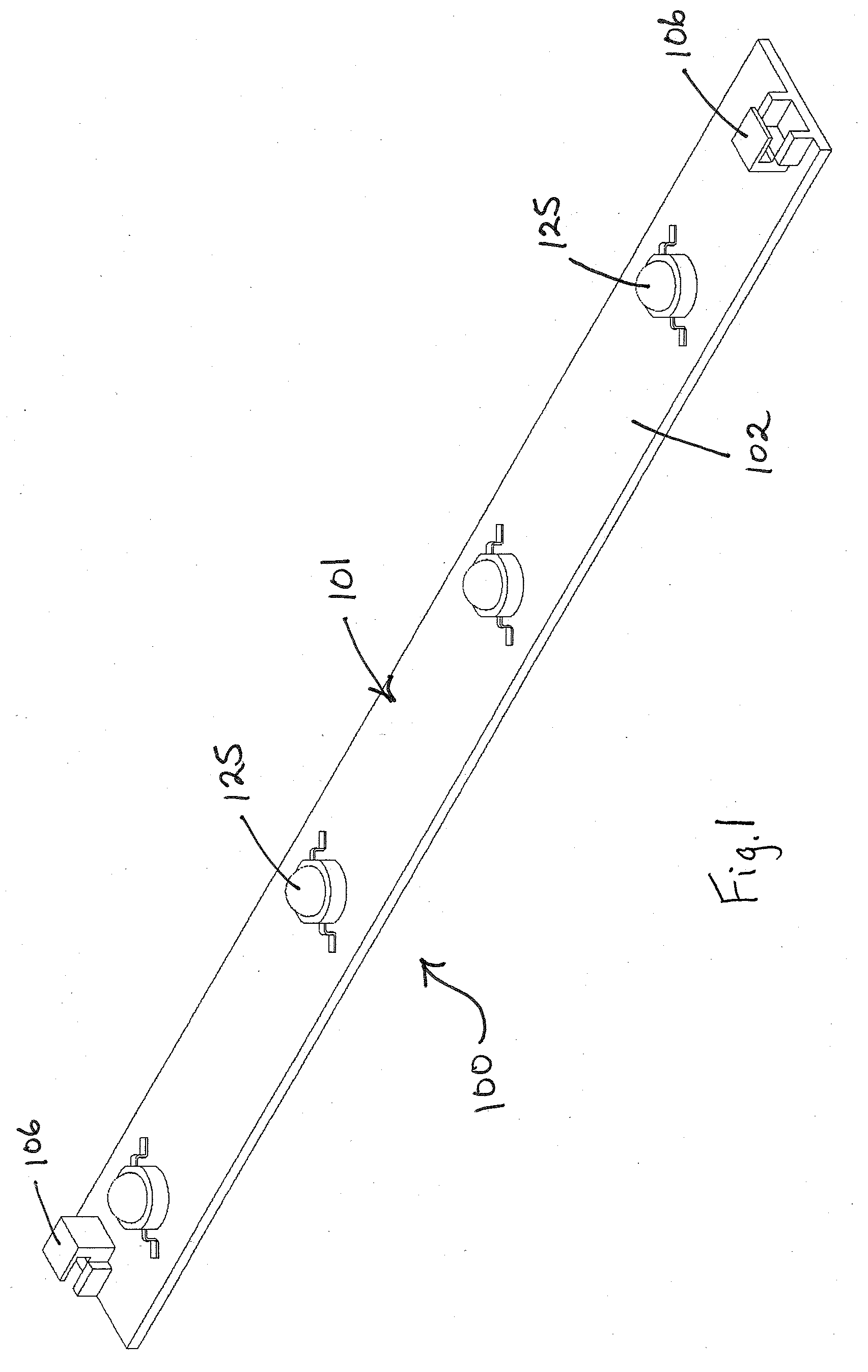Layered structure for use with high power light emitting diode systems
a light-emitting diode and layered structure technology, which is applied in the direction of instruments, paper/cardboard containers, lighting support devices, etc., can solve the problems of poor thermal conductivity, insufficient air or air filling of larger voids, and insufficient thermal grease and adhesive thermal tapes
- Summary
- Abstract
- Description
- Claims
- Application Information
AI Technical Summary
Problems solved by technology
Method used
Image
Examples
Embodiment Construction
[0028]A preferred embodiment layered structure for use with high power light emitting diode systems constructed according to the principles of the present invention is designated by the numeral 100 in the drawings.
[0029]As shown in FIG. 2, the layered structure 100 generally includes a top layer 101, an intermediate layer 110, and a bottom layer 112. Preferably, a commercially available FR4 material is used as a starting material and is modified to create the layered structure 100. The FR4 material preferably includes a layer of fiberglass sandwiched between two layers of copper. An example of a suitable FR4 material is FR406 manufactured by Isola Group of Chandler, Arizona. The top layer 101 includes one of the two layers of copper, the intermediate layer 110 includes the layer of fiberglass, and the bottom layer 112 includes the other of the two layers of copper. It is recognized that other suitable FR4 materials could be used and that these layers could be either manufactured or ...
PUM
| Property | Measurement | Unit |
|---|---|---|
| thick | aaaaa | aaaaa |
| flatness | aaaaa | aaaaa |
| flatness | aaaaa | aaaaa |
Abstract
Description
Claims
Application Information
 Login to View More
Login to View More - R&D
- Intellectual Property
- Life Sciences
- Materials
- Tech Scout
- Unparalleled Data Quality
- Higher Quality Content
- 60% Fewer Hallucinations
Browse by: Latest US Patents, China's latest patents, Technical Efficacy Thesaurus, Application Domain, Technology Topic, Popular Technical Reports.
© 2025 PatSnap. All rights reserved.Legal|Privacy policy|Modern Slavery Act Transparency Statement|Sitemap|About US| Contact US: help@patsnap.com



